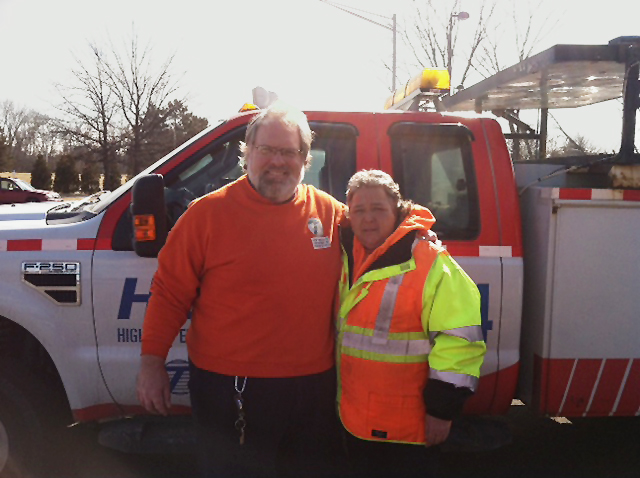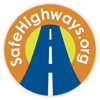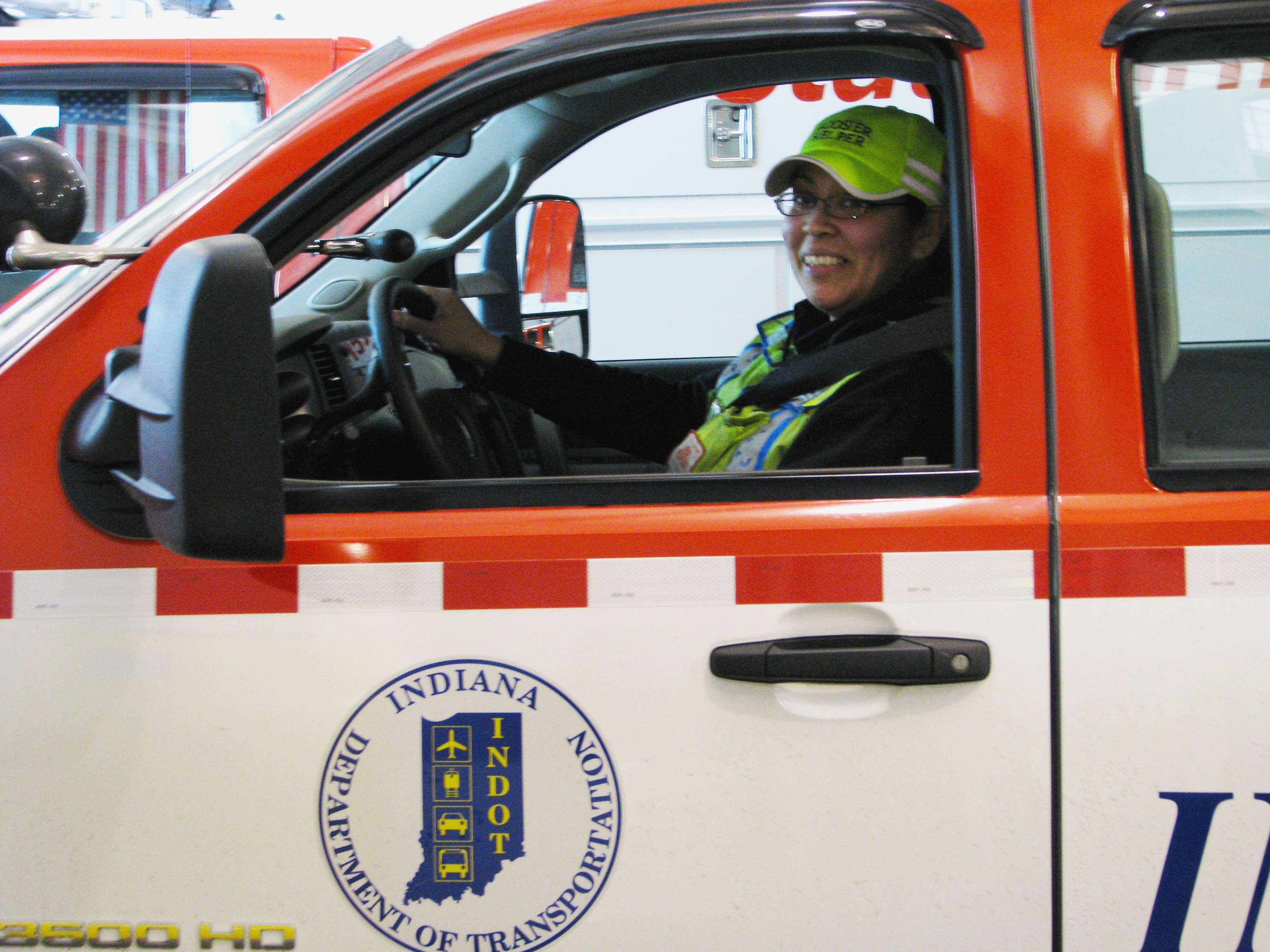Taking the Wheel
A Look at Women’s Roles in Safety Service Patrols
By Tara Baukus Mello
The sight of a Safety Service Patrol truck in a stranded motorists’ rear view mirror brings an immediate sigh of relief that help has arrived. Yet when a woman emerges from the cab that sigh often changes to surprise, as women are a rarity in transportation jobs and even more rare in Safety Service Patrols.
“Motorists automatically assume there’s a guy behind the wheel of the truck, so when they see me they are usually pretty surprised, but they always end up being very grateful for my help,” says Kim Yates, an Emergency Patrol driver for the Maryland State Highway Administration for more than two decades.
While women represent about 47 percent of the overall workforce, according to the current population survey by the Bureau of Labor Statistics, they represent only 15.9 percent of the workers in transportation and material moving occupations, which include a wide range of jobs such as engineers, pilots, stock handlers and parking lot attendants. The good news is that number is rising, says Marcia Ferranto, President of Women in Transportation (WTS) International, an organization dedicated to advancing women in the transportation field. “There are two strong indicators that more women are attracted to the transportation industry – STEM (science, technology, engineering and math) initiatives in schools are attracting them to the field at increasingly younger ages and currently more women are graduating from college with engineering degrees than men,” she says.
Even though women are attracted to transportation careers in increasing numbers, there is still a very small number of them in the Safety Service Patrol industry. No specific data on the number of women in the Safety Service Patrol industry is currently available, though WTS International has just begun a major research project which will include determining the number of women involved with SSPs. “We know that it is very low — perhaps a couple of percent — and it has not risen the way other transportation fields have,” says Ferranto. Indeed, those interviewed for this article who have been in the field for 20 years or more indicated that they have typically seen one or two women involved in Safety Service Patrols at a time consistently over their tenures.
Within that small number of women involved in this niche, the majority of them are in supervisor roles and are not out on the road. Rebecca Gibson, the Statewide Manager for the Highway Emergency Local Patrol (HELP) program at the New York State Department of Transportation (NYSDOT), estimates that about 25 percent of those in NYSDOT management are women, while about 1 in 40 HELP drivers (about 2.5 percent) are female. Similar percentages were found when interviewing other state DOT programs for this article.
The low percentage of women driving the Safety Service Patrol trucks may stem from a shortage of female applicants proposes Don Holder, Manager of the Indiana DOT Hoosier Helpers. “We look for applicants with a mechanical background or a safety background, and we just don’t find many women who have expertise in those areas.” NYSDOT HELP Project Manager Mike Link agrees, “There’s just not a lot of [female] interest in this work.”
Holder also noted that there might be a lack of female applicants because of the dangers of the job. “Truly, it is a dangerous job for anybody with other drivers speeding by when they are working on the roadside,” he explained. Cristi Polen, a Missouri DOT Motor Assist Operator for 14 years, agreed, “It is a dangerous occupation that requires a lot of training, physical labor and fast thinking. How many people — men or women — do you know that would want to play in 70 mph traffic for a living?”
“You have to have a lot of confidence in yourself to work in this field and I think a lot of women just don’t have that level of confidence,” says Paula Rodriguez, a HELP truck driver in the Albany, NY region for seven years.
Beyond the dangers of working close to speeding traffic, women may also be perceived as more vulnerable when assisting a motorist by virtue of entering a situation with a potential for many unknowns. The female Safety Service Patrol drivers interviewed for this article, however, reported feeling comfortable responding to all motorist calls. Theresa Torres, a Hoosier Helper in Indiana who has been on the job for just over a year, doesn’t feel any increased vulnerability because of her gender. “I do have a lot of street smarts as well as some martial arts training, so that does increase my confidence when I’m responding to a call,” she says.

NYSDOT HELP Project Manager Mike Link and HELP driver Paula Rodriguez have enjoyed their experiences working alongside each other in traffic incident management.
With females responding to motorists’ needs on the roadway there may be a bias among some motorists that auto mechanics and roadway assistance are not within a woman’s domain. NYSDOT HELP Project Manager Mike Link says, that female drivers have to work harder to earn the trust of motorists. “I know that many men don’t trust women to work on their vehicles, but nonetheless, motorists stuck on the interstate are very happy when I show up,” says Rodriguez. Rodriguez says that she has never experienced a noticeable doubt from a motorist when she arrives to help.
Women working in Safety Service Patrols are treated the same as men by their peers and managers within the industry. While equality in the workplace is often what women strive for, in this case it may actually be part of the reason why more women aren’t in the field and why there aren’t more women in transportation careers overall. Transportation jobs are often not “family friendly” which often makes them more burdensome for women. “One of the biggest problems is that the culture in the transportation industry is not keeping up with the needs of the work force,” says Ferranto. “Issues such as working swing shifts or requiring managers to be on a roadside job site at 5 am and speaking at a town hall meeting at 8 pm are just not conducive to people with families — and that makes it harder to retain women in this industry and even more challenging for them to move up into the higher levels of management. We have created an environment in transportation where there is not a culture for women to succeed, so they jump to other careers.” Indeed, many Safety Service Patrol drivers were required to work swing shifts or during typical “non-business” hours, since they are most needed during commuting hours, on holidays and sometimes on short notice, due to weather issues affecting the roads.
Female Safety Service Patrol drivers currently in the field have proven their ability to develop all the necessary skills to meet the physical demands of the job, but the existing equipment used during the job can be an issue. Ellen Voie, President of the Women in Trucking Association noted in a presentation at the Transportation Research Board Conference in 2012 that because of the differences in women’s height and body shape, they can experience discomfort and work-related injuries due to issues with the seat belts, seats, steering wheel, controls and levers in the trucks. Emergency Patrol driver Yates acknowledges that these are issues that anyone in the career has to face, but she doesn’t think that women are avoiding the field as a result. “I don’t think they know about this as a career,” she says. “There just aren’t that many [Safety Service Patrol drivers] out there and when they do become aware of it, they just dismiss it, thinking they could never do that, but they can.”
Indiana’s Holder wholeheartedly agrees that women are more than capable of performing the job. “Theresa (Torres) is awesome. She runs circles around these guys,” Holder says. “There is absolutely no reason that a woman can’t do as good a job as a male Hoosier Helper. Theresa is living proof of that.”
While the number of women in the Safety Service Patrol field remains disproportionately low, the women that are involved seem to all find it very fulfilling. Jessica Polito-Tucker, a dispatcher-turned-administrator who has been part of the NYSDOT HELP program in the Long Island area for 19 years says, “I’ve been involved with the HELP program since it was first initiated and I’m proud to be part of a program that gets disabled motorists back on the road.”
Torres, who has been a Hoosier Helper for just over a year, also finds great satisfaction in her work. “When they [motorists] see me arrive, it is someone they can relate to. I like knowing that I can help them, and that I’m also putting them at ease, especially female motorists, who are often feeling especially vulnerable on the roadside.”
“It does take a certain kind of person to do this job, but I really enjoy helping the public,” says veteran patrol driver Yates. “We are saving lives every day.”

